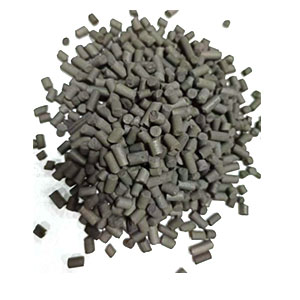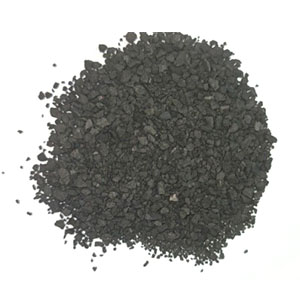Activated Carbon Classification and Key Applications
Introduction
Activated carbon is a highly porous form of carbon with a large surface area, making it an excellent adsorbent for various contaminants. Its ability to trap impurities has led to widespread use in environmental, industrial, and medical applications. This article explores its classification and key uses in detail.
Production Methods
Activated carbon is made from carbon-rich materials like coconut shells, wood, coal, through two main processes:
- Carbonization – Heating the raw material in an oxygen-free environment to remove volatile compounds.
- Activation – Enhancing porosity via:
Physical activation (using steam or CO₂)
Chemical activation (using acids or bases like phosphoric acid or potassium hydroxide)
The choice of material and activation method determines the carbon’s final properties.
Classification of Activated Carbon
Activated carbon can be categorized based on:
1. Physical Form
- Powdered Activated Carbon (PAC) – Fine particles (<0.18 mm) used in liquid-phase treatments, such as water purification and decolorization.
- Granular Activated Carbon (GAC) – Larger granules (0.2–5 mm) used in gas and water filtration systems.
- Pelletized Activated Carbon – Compressed cylindrical pellets for air and vapor-phase applications.
Activated Carbon Fiber (ACF) – Cloth or felt form, used in specialized gas masks and solvent recovery.


- 2. Source Material
- Coconut Shell-Based – High microporosity, ideal for gas adsorption (e.g., respirators, gold recovery).
- Wood-Based – Larger pores, often used in decolorizing liquids like sugar syrups.
- Coal-Based – Cost-effective, widely used in industrial air and water treatment.3. Pore Size
- Microporous (<2 nm) – Effective for small molecules (e.g., gas storage, VOC removal).
- Mesoporous (2–50 nm) – Used in larger molecule adsorption (e.g., dye removal).
- Macroporous (>50 nm) – Acts as a pre-filter to prevent clogging in liquid treatments.
- Drinking Water Purification – Removes chlorine, organic contaminants, and bad odors.
- Wastewater Treatment – Filters industrial effluents, pharmaceuticals, and heavy metals (e.g., mercury, lead).
- Aquarium Filtration – Maintains clean water by adsorbing toxins.2. Air & Gas Purification
- Indoor Air Filters – Traps volatile organic compounds (VOCs), smoke, and odors.
- Industrial Gas Cleaning – Removes pollutants like hydrogen sulfide (H₂S) from refinery emissions.
- Automotive Applications – Used in car cabin air filters and fuel vapor recovery systems.3. Medical & Pharmaceutical Uses
- Poison & Overdose Treatment – Emergency antidote for drug overdoses (e.g., activated charcoal tablets).
- Wound Dressings – Antimicrobial activated carbon fibers prevent infections.4. Food & Beverage Industry
- Decolorization – Refines sugar, vegetable oils, and alcoholic beverages.
- Flavor Enhancement – Removes unwanted tastes in drinking water and juices.5. Industrial & Specialty Uses
- Gold Recovery – Extracts gold from cyanide solutions in mining.
- Solvent Recycling – Recovers acetone, benzene, and other chemicals.
- Gas Storage – Stores methane and hydrogen in energy applications.
Conclusion
Activated carbon is a versatile material with critical roles in environmental protection, healthcare, and industrial processes. Its effectiveness depends on its form, source material, and pore structure. Future advancements aim to improve its sustainability, such as producing it from agricultural waste or enhancing regeneration techniques.
As global challenges like water scarcity and air pollution intensify, activated carbon will continue to play a vital role. Future applications may expand into emerging fields such as carbon capture for climate change mitigation or advanced filtration systems for microplastic removal.
We are the main supplier in China, for price or more information welcome to contact with us at:
Email: sales@hbmedipharm.com
Telephone:0086-311-86136561
Post time: Jul-10-2025

